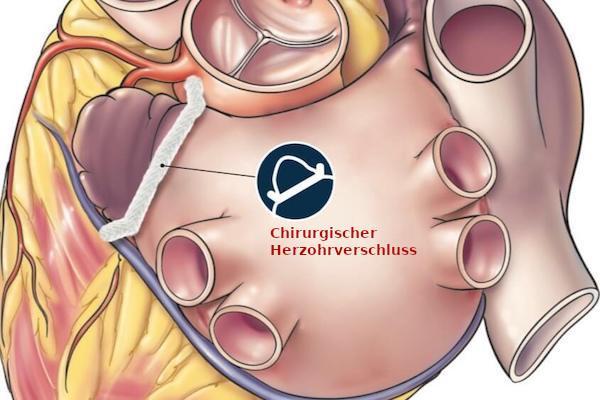LAA Closure as stroke prevention
Most blood clots that can cause a serious stroke, occur during atrial fibrillation in the left atrial appendage. To prevent a stroke, lifelong blood thinning is mandatory for most patients. However, blood thinning permanently increases the risk of bleeding and can also cause problems due to interactions with other medicines. As an alternative to blood thinning, the left atrial appendage can be mechanically closed. This is an established therapy, that protects patients against a stroke and spare patients lifelong blood thinners.
Do you have a finding and would like a second opinion or are you not sure if you need a heart ear closure? One of our specialists will be happy to take the time in a consultation session.
Background on LAA Closure
The primary goal is to prevent stroke without taking medications. According to current knowledge, for selected patients with atrial fibrillation, LAA occlusion is an alternative to taking such blood thinners. The LAA is a small pouch of the left atrium where blood stasis can occur. This happens in atrial fibrillation and is very dangerous, because in this pouch, blood clots can form. Blood clots can then embolize, move and cause a stroke.
For this reason, there have been several different attempts in recent years to close the left atrial appendage and thereby avoiding taking blood thinners. Various methods have been established.
Two methods – Tailoring the approach
LAA Closure by catheter (from the inside)
When the left atrial appendage is closed with a catheter, an umbrella ("watchman" or "amplatzer") is inserted from within the bloodstream. This mechanically excludes the LAA and prevents blood from forming clots there. The risk of a stroke is reduced, even when stopping anticoagulants. Other medications such as antiplatelets usually need to be continued.
Minimally invasive LAA closure (from the outside)
The blood thinning can be stopped immediately by attaching (through thoracoscopy) a clip to the left auricle - or cutting it off with a “stacker”. This method is much more effective than the catheter occlusion, but it’s an operation, and therefore somewhat more invasive. Not all patients qualify for this. After the procedure, all medication can be stopped. This procedure is part of the surgical ablation, but can also be done as an isolated procedure. Prof. Salzberg was significantly involved in the development of the atriclip.
Check out the video of the surgery:
LAA Closure with a clip

The left auricle is a small bulge in the left atrium. When atrial fibrillation occurs, blood clots can form there. Therefore, it is so important, to take a blood thinner as a stroke prophylaxis. If the left atrial appendage (LAA) is closed, blood thinning is no longer necessary. The LAA is (almost) always closed with a clip during surgery.
Who qualifies for this procedure?
Patients with atrial fibrillation who cannot (or do not want to) take blood thinners due to intolerances or complications. Also, patients who have an increased risk of bleeding and thus profit from the closure of the LAA.
